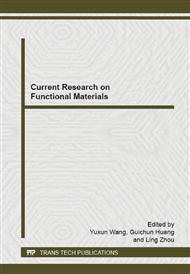p.216
p.224
p.231
p.235
p.240
p.245
p.252
p.257
p.263
Kinetics Study of Thermal Degradation of Epoxy Resins Modified with 2-(Diphenylphosphinyl)-1, 4-Benzenediol
Abstract:
Phosphorus-containing epoxy resins with different phosphorus content were obtained from 2-(Diphenylphosphinyl)-1, 4-benzenediol (DPO-HQ) and biphenyl-A epoxy resin by crosslinking with 4, 4’-diaminodiphenylsulfone (DDS). The thermal degradation kinetics of the modified epoxy resins containing different phosphorus content were investigated by dynamic thermogravimetric analysis (TGA) under air atmosphere with different heating rate. The degradation of epoxy resins containing flame retardant components were found to be changed. The additive of phosphorus increases the carbon residue and improves the thermal stability at elevated temperature. The kinetics of thermal degradation was evaluated by Kissinger method and Flynn-Wall-Ozawa method, which do not require knowledge of the reaction mechanism. The results showed that the activation energies at lower degree of the degradation decreased with increasing of phosphorus content, while increased at higher degree of the degradation.
Info:
Periodical:
Pages:
240-244
Citation:
Online since:
October 2014
Authors:
Price:
Сopyright:
© 2014 Trans Tech Publications Ltd. All Rights Reserved
Share:
Citation:


